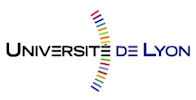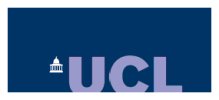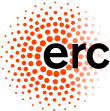 |
 |
 |
 |
6/7 January 2011, Lyons France | |||||||||||||||||||||||||||||||||||||||||||||||||||||||||||||||||||||||||||||||||||||||||||||||||||||||||||||
| Id:1001 |
Rachel Baker and Valerie Hazan, UCL Speech Hearing and Phonetic Sciences.
Characteristics of clear speech strategies when conversing with speakers experiencing adverse listening conditions. |
| Id:1002 |
Jan Rennies, Thomas Brand & Birger Kollmeier, Oldenburg, Germany.
Prediction of binaural speech intelligibility in reverberant conditions. |
| Id:1003 |
Jelfs S., Culling J. F. & Lavandier M. Université de Lyon, ENTPE-DGCB (CNRS), France; School of Psychology, Cardiff University, UK.
Validation of a binaural model for speech intelligibility in noise and reverberation. |
| Id:1004 |
Juan-Pablo Ramirez, Technical University Berlin, Deutsche Telekom Laboratories.
ASR-based Intelligibility Predictions for Speech in Fluctuating Noise. |
| Id:1005 |
E. Gaudrain, R.P. Carlyon, MRC Cognition and Brain Sciences Unit, Cambridge, UK.
Noise vocoded zebra speech: Invite a stripy friend to your cocktail party. |
| Id:1007 |
E. Sohoglu, J. E. Peelle, R.P. Carlyon and M. H. Davis, MRC Cognition and Brain Sciences Unit, Cambridge, UK.
The time course of audiovisual interactions affecting the perception of distorted speech. |
| Id:1008 |
Verena Uslar, Oldenburg, Germany.
Evaluation of the Oldenburg Linguistically and Audiologically Controlled Sentence Test (OLACS). |
| Id:1009 |
Sabine Hochmuth, Melanie Zokoll, Thomas Brand and Birger Kollmeier. Oldenburg, Germany.
A new Spanish matrix test for testing speech intelligibility in noise. |
| Id:1010 |
Houda SAOUD, Eric TRUY, Julie BESTEL, Anne-Lise GIRAUD. CNRS UMR 5020, Laboratoire Neurosciences Sensorielles,
Comportement, Cognition, Lyon, France. Advanced Bionics Europe. Laboratoire de Neurosciences Cognitives Inserm U960 - DEC, Paris, France.
Hemispherical Preference and Laterality Effects in the Processing of Dichotic Speech Recognition. |
| Id:1011 |
Shilpi Banerjee, Ph.D. Senior Research Audiologist, Starkey Laboratories, Inc.
Laboratory Evaluation of Directional Preference: Effects of Stimulus Type and Location. |
| Id:1012 |
John Deeks, Bob Carlyon, and Hedwig Gockel. MRC Cognition & Brain Sciences Unit, Cambridge, UK.
Does pitch processing depend on a place-rate match? |
| Id:1013 |
Jing Chen, PhD, University of Cambridge, Hearing Lab, Cambridge, UK.
Measuring and modeling the effect of frequency modulation of a masker on informational masking of speech. |
| Id:1014 |
Yan Tang and Martin Cooke, Language and Speech Laboratory University of the Basque Country, Vitoria, Spain.
Improving the objective intelligibility of speech in noise by energy reallocation in time and frequency. |
| Id:1015 |
Dorothea Wendt, Thomas Brand, Birger Kollmeier. Medizinische Physik, Institute of Physics, CvO University of Oldenburg, Germany.
Decision moments and eye movements: When is a complex sentence understood? |
| Id:1016 |
Fanny Loyau, Dr. Département Action & Cognition en Situation Opérationnelle, Institut de Recherche Biomédicale des Armées, France.
Management of communication in aeronautical complex systems. |
| Id:1017 |
Tobias May1, Steven van de Par1 and Armin Kohlrausch2, 3. 1Institute of Physics, University of Oldenburg, Germany. 2Philips Research, Eindhoven, The Netherlands. 3Eindhoven University of Technology, Eindhoven, The Netherlands.
Binaural speaker localization and recognition in reverberant multi-source scenarios. |
| Id:1018 |
S. Theo Goverts and Tammo Houtgast. ENT/Audiology & EMGO Institute for Health and Care Research, VU University Medical Center, Amsterdam, The Netherlands.
Understanding Speech in Noise by hearing-impaired listeners: the role of supra-threshold deficits in the Binaural Intelligibility Level Difference (BILD). |
| Id:1019 |
Claus Christiansen, PhD student, Center for Applied Hearing Research, Technical University of Denmark.
Masking release with processed speech in normal-hearing and hearing-impaired listeners. |
| Id:1020 |
Helen Nuttall, Dave Moore, Johanna Barry. MRC Institute of Hearing Research, Nottingham.
Enhancement of selective attention and working memory through musical training and its impact on speech-in-noise listening. |
| Id:1021 |
Thomas Ulrich Christiansen, Centre for Applied Hearing Research, Department of Electrical Engineering, Technical University of Denmark, Lyngby, Denmark.
A Nonsense Consonant-Vowel Material for Danish. |
| Id:1022 |
Jeanvoine Arnaud1, Christian Berger-Vachon1, Dan Gnansia2, Hung Thai-Van1. 1Laboratoire Neuroscience Sensoriel Comportement et Cognition - UMR 5020 CNRS, Lyon1 - Hopital Edouard Herriot, Pavillon U, 5 place d'Arsonval, 69437 cedex 03. 2MXM - Neurelec, 2720 Chemin St Bernard, 06224 Vallauris
Binaural denoising algorithms associated with the Digisonic® SP Binaural cochlear implant system. |
| Id:1023 |
Spielmann, M., Bendixen, A., Kotz, S., Pechmann, T., Schröger, E.
Maturation of Auditory Stream Segregation in Children and Young Adults. |
| Id:1024 |
Frederic Apoux, Carla Y. Berg, Sarah E. Yoho and Eric W. Healy. Department of Speech and Hearing Science. The Ohio State University. Columbus, OH 43210 - USA.
Differential contribution of target and masker temporal fine structure to the segregation of speech from noise. |
| Id:1025 |
Hervais-Adelman, A., Golestani, N., Obleser, J., Scott, S. Functional Brain Mapping Lab. Centre Medical Universitaire, Genève, Switzerland.
Speech in Noise: Neural substrates of challenging speech perception with and without supporting semantic context. |
| Id:1026 |
Dekerle, M.1,2, Boulenger, V.1, Meunier, F2. 1Laboratoire dynamique du Langage, Lyon, France. 2Centre de recherche en neurosciences de Lyon, CNRS, INSERM, Université Lyon 1, Lyon, France.
Semantic priming at the cocktail-party. |
| Id:1027 |
Lloyd Watts, Audience, Inc.
2-microphone Noise Suppression based on the Human Auditory Pathway. |
| Id:1028 |
Aurore Gautreau, Michel Hoen, Fanny Meunier. Centre de Recherche en Neurosciences de Lyon, CNRS - INSERM- Université Lyon 1, Lyon, France.
Speech-in-speech situation: exploring the linguistic interferences during the comprehension of speech in multi-linguistic babbles. |
| Id:1029 |
Fathi KALLEL, Ahmed BEN HAMIDA, Hung THAI VAN, Christian BERGER-VACHON. Research Unit in Information Technology and Medical Electononics, Sfax National Engineering School, University of Sfax, Tunisia. 2 PACS Team, INSERM Unit 821 : "Cognition and Brain Dynamics", Lyon Neurosciences Centre, Claude Bernard University, France.
Comparison of Spectral Subtraction and Wiener Filtering Speech Enhancement Algorithms in noise: Application to Cochlear Implant. |
| Id:1030 |
Füllgrabe, Christian1, Moore, Brian C.J.2, and Stone, Michael A.2. 1 MRC Institute of Hearing Research, Nottingham, UK. 2 Department of Experimental Psychology, University of Cambridge, UK.
Speech-in-noise intelligibility and temporal-processing abilities of young and older listeners with audiometrically normal hearing. |
| Id:1031 |
Vaclav Bouse. Siemens Audiologische Technik GmbH.
A model-based auditory scene analysis approach and its application to speech source localization. |
| Id:1032 | Ulrik Kjems, Michael Syskind Pedersen, Jesper Boldt, Thomas Lunner and DeLiang Wang. Oticon, Smørum, Denmark. Research Centre Eriksholm, Denmark. Dept. of Computer Science & Engineering and Center for Cognitive Science, Ohio State Univ. |
| Id:1033 | Patrick Marmaroli1, Philippe Martin2, Xavier Falourd1, Hervé Lissek1. 1EPFL: Swiss Federal Institute of Technology, Lausanne. 2AER: Acoustical Engineering and Research, Lausanne, Switzerland. |
| Id:1034 |
Marjorie Dole, Fanny Meunier, Michel Hoen. Centre de Recherche en Neurosciences de Lyon, CNRS - INSERM- Université Lyon 1, Lyon, France.
Spatial effects during speech-in-speech comprehension in dyslexic adults: an fMRI study. |
| Id:1035 | Martina Bellanova1, Marc Aubreville1, Matthias Latzel1, Ulrich Hoppe2. 1Siemens Audiology Solutions, Erlangen, Germany. 2ENT Department, University of Erlangen, Germany. |
| Id:1036 |
Søren Jørgensen and Torsten Dau.
Predicting the intelligibility of processed noisy speech based on the signal-to-noise ratio in the modulation domain. |
| Id:1037 |
Rainer Huber, Christian Bartsch and Joerg Bitzer, HörTech, Oldenburg, Germany; e-mail: Rainer.Huber@HoerTech.de; Institute for Hearing Technology and Audiology (IHA), Jade University Of Applied Sciences, Oldenburg, Germany
Noise reduction for automatic speech recognition in ambient assisted living. |
Oral Communications
| Id:2000 |
Stephan Launer, Phonak A.G., CH.
State of art and challenges of improving speech intelligibility in hearing impaired people. |
| Id:2001 |
Lavandier M., Culling J. F. and Jelfs S. Université de Lyon, ENTPE-DGCB (CNRS), France; School of Psychology, Cardiff University, UK.
An integrated model of speech intelligibility in noisy rooms and its application to hearing aids. |
| Id:2002 |
Martin Cooke. Language and Speech Laboratory (laslab.org), University of the Basque Country, Spain, and IKERBASQUE (Basque Foundation for Science).
Speaking in the presence of background speech. |
| Id:2003 |
Christian Lorenzi Equipe Audition, UMR LPP, CNRS, Université Paris Descartes, & Ecole normale supérieure, Paris, France.
Auditory mechanisms of robust speech. |
| Id:2004 |
S. Rosen and T. Green, Department of Speech, Hearing and Phonetic Sciences, UCL, London, UK.
The role of periodicity and glimpsing in the perception of noise-vocoded speech in interfering backgrounds based on ntalker babble. |
| Id:2005 |
Fanny Meunier, Michel Hoen & Marjorie Dole. SpiN & Groupe de recherche PACS : Parole, Audiologie, Communication & Santé. Centre de Recherches en Neuroscience de Lyon - Inserm, Cnrs, Université Lyon 1. & Laboratoire dynamique du langage, Cnrs - Université Lyon 2. Lyon, France.
Effect of spatial separation on speech-in-noise comprehension in adult dyslexics. |
| Id:2006 |
Bas van Dijk. Global research Coordinator, sound coding, Cochlear Ltd.
Take your pick; or, how to optimize channel selection strategies for listening in noise with Cochlear Implants. |
| Id:2007 | Mike Brookes & Mark Huckvale. Electrical & Electronic Engineering Department, Imperial College, UK. Speech, Hearing and Phonetic Sciences, University College London, UK. |
| Id:2008 |
Jerker Rönnberg, Mary Rudner, Thomas Lunner & Adriana Zekveld. Department of behavioural sciences, University of Linköping, Sweden.
Ease of Language Understanding in Noise. |
| Id:2009 |
Jonas Obleser. Max Planck Institute for human cognitive and brain sciences, Leipzig, Ger.
Neural signatures of facilitation and effort in comprehension of degraded speech. |
| Id:2010 | Inge Brons, Rolph Houben, Wouter A. Dreschler. Academic Medical Centre, NL. |
| Id:2011 |
Gaston Hilkhuysen & Mark Huckvale (Speech, Hearing and Phonetic Sciences, University College London, UK).
Intelligibility of speech in noise after lossy audio data compression. |
| Id:2012 |
Nikolai Kousnetsov (Research in Motion - RIM).
On the Ontology of the Problem Domain "Speech Enhancement" |
| |||
 |
 |
 |
 |
 |
|||